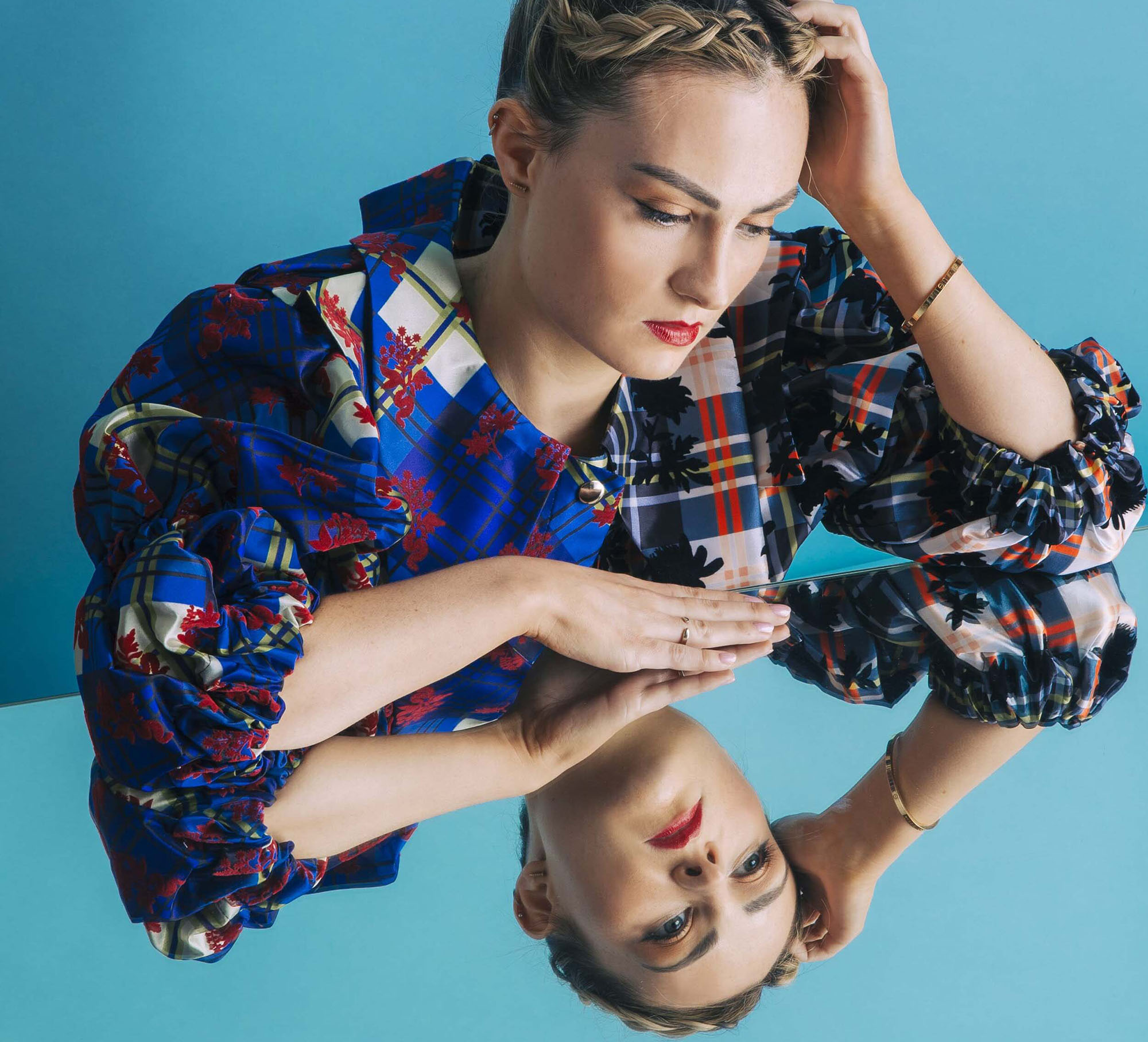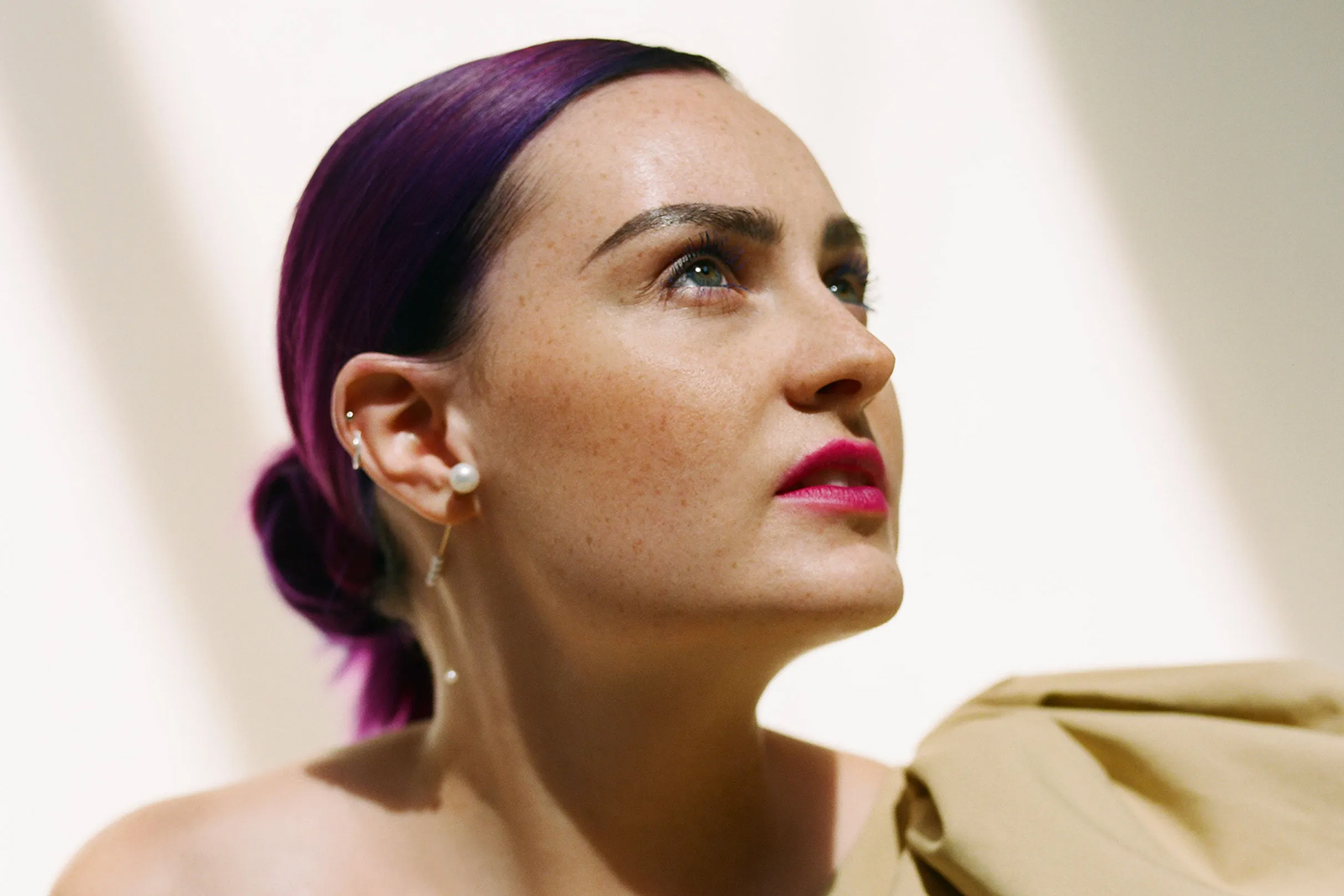Molly Burke: The True Superhero of Makeup
Social media is frequently portrayed as a source of negativity and abuse, but it’s also a vital tool to enable people to connect with other like-minded individuals; people with shared experiences and interests who may have little in common in other areas. Molly Burke’s videos are a tremendous example of this, bringing together the worlds of makeup tutorials and disability in one of the most engaging, funny, and honest channels on the YouTube platform.

An uncertain childhood
Molly was born as an apparently healthy baby in 1994 in Ontario, Canada but when she was just six months old her family started to notice problems with her eyesight. Over the next few years she was diagnosed with nystagmus, which causes involuntary eye movement, strabismus, which affects the alignment of the eyes, and retinitis pigmentosa, a genetic eye disorder that causes gradual loss of vision. Surgeons were able to successfully operate on the first two conditions but there is no known cure for retinitis pigmentosa. The long term prognosis for Molly was that her eyesight would continue to gradually deteriorate but nobody could say how fast or for how long.
"The brand new social experience where you activate your gaming skills as you train like a spy."
- TimeOut
Take on thrilling, high-energy espionage challenges across different game zones.

Molly’s family did everything they could to help her get the most out of her sight while she had it, encouraging her to take up a wide variety of sports and activities. She also began representing an organization that funds research into blindness cures called Foundation Fighting Blindness Canada, speaking at public events from the age of five onward, talking about her experiences. Over the next decade her eyesight steadily got worse, until finally her vision completely deteriorated at the age of 15. Molly was left with no ability to perceive anything beyond light or dark and was now legally completely blind.
Focusing on ability
At around the same time, Molly’s perception of disability itself was changed by a discussion with one of her teachers, who introduced her to the concept of the social model of disability. This portrays the barriers faced by disabled people as ones placed in front of them by able-bodied society, in stark contrast to the medical model of disability that had dominated her childhood, which depicts disability as a problem in itself, and one that needs to be cured. As Molly later said: “I always felt like I was broken and needed to be fixed because that's what people push on you… but after studying the social model of disability, I came to realize that I’m not broken at all. I can live a fulfilled and happy life as a blind person. The real problem is inaccessibility and the way the world views disability.”

She continued to work as a public speaker but was now giving motivational talks where she highlighted the positive aspects of her life and no longer seeking a cure for her blindness. Soon after graduating from high school she went on tour, speaking to huge crowds on stages alongside luminaries such as Malala Yousafzai, Richard Branson and Martin Sheen. Molly loved public speaking, but life on the road is difficult, tiring, and frequently lonely. It became clear that she needed more in her life than air travel and hotel rooms if she was going to avoid burnout. Fortunately, she discovered YouTube.
Surfing, YouTube and Tinder
As Molly puts it: “I didn’t have friends. I didn’t have girlfriends to go shopping with or talk about boys with, so I turned to the beauty community on YouTube.” In 2015 she began uploading videos, sometimes talking about her blindness and the challenges she faced in everyday life, but more often simply talking about makeup techniques and reviewing cosmetic products. It made a refreshing change from the motivational speaker circuit: “Nobody is gonna book me to talk about bath bombs and makeup and bad dates, but those are the things that make up Molly… once I started wearing the clothes I liked and letting my awkward blind girl moments shamelessly show, and making a joke of it, owning it, I liked who I was better. It attracted people to me because they could see that confidence and joy.”
It didn’t take long for people to notice that confident and joyful outlook. The early years of her channel are filled with entertaining videos on a wide range of subjects, covering everything from Q&As about her guide dog to mirrorless makeup tutorials and anecdotes about her dating life. One dating story in particular garnered a lot of attention, as she described how she matched with someone called Matthew on Tinder who caddishly backed out of a date on learning that Molly was blind, claiming that he could only date a girl who knew how to surf. The extremely sporty Molly wasn’t about to take this lying down and Matthew’s loss was YouTube’s gain as she took to the waves.
The power of personality
Success on YouTube can take a while to arrive, but will often snowball once a certain threshold has been reached. For Molly, that was early in 2017 when she hit the 100,000 subscriber mark. Collaboration videos with big YouTube names such as Kandee Johnson and Lilly Singh followed and by 2020 Molly had amassed over 2m subscribers. Despite this success, the nature of her content barely changed, with the same mixture of makeup and beauty tips, anecdotal pieces to camera about everything from her dating life to body image issues, and lifestyle videos about her day-to-day life as a content creator. These videos are hugely relatable for girls and young women, irrespective of their ability to see, but they’re also extremely entertaining for people of all ages and genders.
There are also plenty of videos about the challenges she faces as a blind person; one notable example being the tale of her being physically assaulted by over-aggressive airport security.
Inspirational for the right reasons
Like many people with disabilities, Molly is wary of being portrayed as inspirational simply because she’s doing things that are considered normal for able-bodied people. The fact that she is able to surf, apply makeup, and have terrible dating experiences does not make her an inspirational figure, but the way in which she is able to be so open about those experiences - both positive and negative - in such a universally relatable manner certainly propels her into the realms of the True Superhero. The key is not the inspiration she provides to the able-bodied - although the fact that she does inspire is impossible to deny - but the confidence and support she’s able to provide to other girls and young women in similar circumstances. Molly’s visibility as a successful young blind woman overcoming the barriers placed in front of her - and looking fabulous while doing it! - isn’t just a great example of the positive power of social media, but like all the best superhero content it’s also hugely entertaining.
SPYSCAPE+

Join now to get True Spies episodes early and ad-free every week, plus subscriber-only Debriefs and Q&As to bring you closer to your favorite spies and stories from the show. You’ll also get our exclusive series The Razumov Files and The Great James Bond Car Robbery!


Gadgets & Gifts
Explore a world of secrets together. Navigate through interactive exhibits and missions to discover your spy roles.
Your Spy Skills
We all have valuable spy skills - your mission is to discover yours. See if you have what it takes to be a secret agent, with our authentic spy skills evaluation* developed by a former Head of Training at British Intelligence. It's FREE so share & compare with friends now!
* Find more information about the scientific methods behind the evaluation here.


Stay Connected
Follow us for the latest
TIKTOK
INSTAGRAM
X
FACEBOOK
YOUTUBE